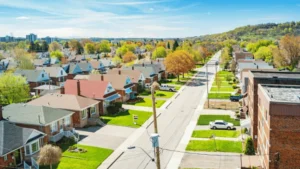As Canada grapples with fluctuating office space dynamics, Vancouver’s Vancouver office market is making strides towards stability, a contrast to the national landscape characterized by high vacancy rates and tentative tenant absorption.
Vancouver’sVancouver’s Encouraging Performance
In 2023, Vancouver’s downtown office market witnessed a significant uptick in tenant activity, with 292,000 square feet of office space absorbed, 212,000 square feet of which occurred in the fourth quarter alone. This data, provided by CBRE, indicates a positive trajectory for the city. The vacancy rate in downtown Vancouver experienced a notable decrease of 80 basis points, landing at 11%, buoyed by several full-floor leases in class-A buildings. This trend marks a gradual yet promising rebound for the local office market, especially as the latest wave of new office development concludes.
Office Construction and Sublease Trends
Regionwide, Vancouver, which has an office inventory of approximately 52 million square feet, is seeing about 3.1 million square feet of office space under construction. Notably, about 1.1 million square feet of this development is located in the downtown core, with 90% pre-leased. Despite this, the overall construction pipeline is lightening, with no new major project launches reported in Q4 of 2023. In addition, the region has observed a reduction in available sublease space, signalling a shift in market dynamics.
Rent and Demand Dynamics
The average class-A asking rent in the Vancouver region stands at $39.99 per square foot, the highest in Canada. Demand for both new and subleased spaces has been broad-based, encompassing sectors like technology, resources, professional services, and education. Most deals in Q4 involved smaller transactions, but the quarter saw 16 separate full-floor office deals, an encouraging sign for the market.
Suburban Markets and National Picture
While downtown Vancouver is showing signs of recovery, the suburban markets have traditionally had lower vacancy rates. However, this is expected to change with more new inventory arriving in suburban areas. Nationally, the office market scenario is more complex, with Canada’s downtown office vacancy rate hitting a record high of 19.4% in the final quarter of 2023. Cities like Toronto, Ottawa, Calgary, Edmonton, and Halifax each present unique market conditions, with varying factors influencing their respective vacancy rates.
Hybrid Work and Office Utilization
The return to office and hybrid work policies continue to play a significant role in office space dynamics. In Vancouver, there’s a general sense of increased office utilization, with more foot traffic and busier restaurants during lunch hours. However, a global survey by JLL indicates that Canadian workers are spending an average of 3.6 days per week in the office, slightly more than their preferred 2.9 days. This trend suggests that Canadian office workers are spending more time in the office compared to the global average.
Future Outlook
As employers and employees navigate the hybrid work model, the challenge remains in creating office environments that are functional, accessible, and conducive to productivity. Commute times and costs continue to be significant barriers to office attendance.
Looking ahead, Vancouver’s Vancouver office market shows promising signs of stability and resilience, potentially serving as a model for other Canadian cities facing more turbulent market conditions.





